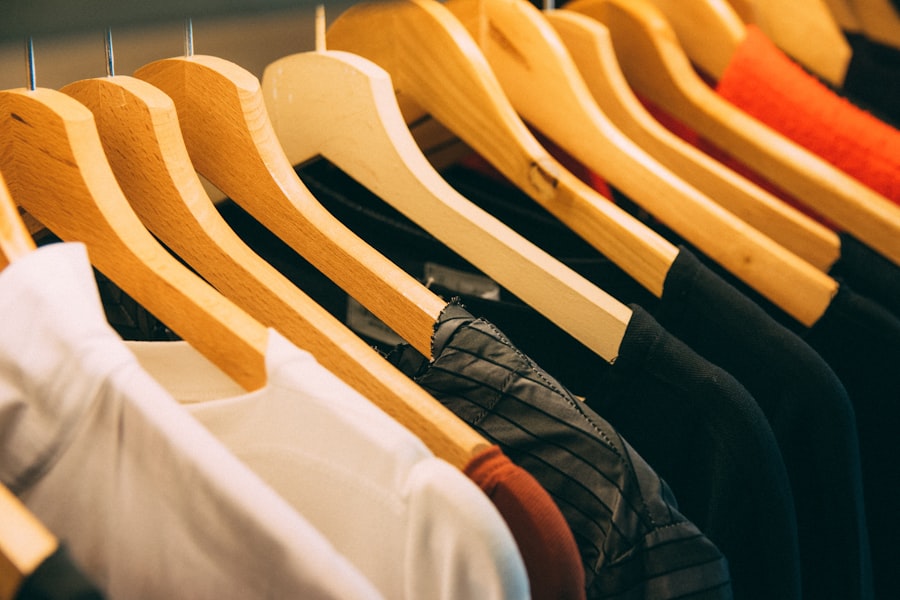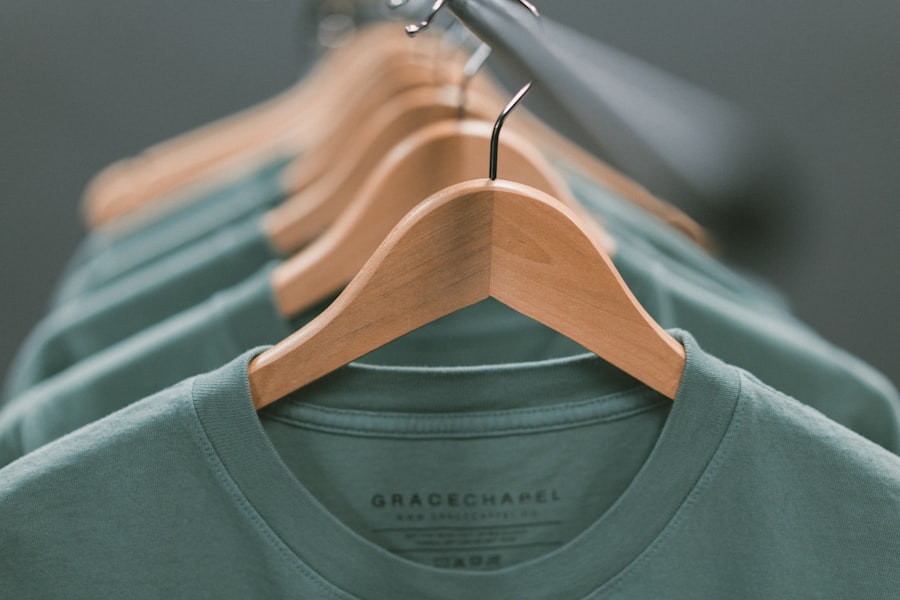
Wait! Don’t Go Yet! 👋
We see you eyeing those adorable outfits! 😍 Before you leave, here’s 10% OFF your first order!
Hurry, your little one’s next favorite outfit is waiting! 🛍️✨

We see you eyeing those adorable outfits! 😍 Before you leave, here’s 10% OFF your first order!
Hurry, your little one’s next favorite outfit is waiting! 🛍️✨
In recent years, the conversation surrounding sustainable fashion has gained significant traction, and this dialogue extends to the realm of toddler clothing. Eco-friendly toddler fashion is not merely a trend; it represents a conscious shift towards more responsible consumerism, particularly in the context of children’s apparel. As parents become increasingly aware of the environmental implications of their purchasing decisions, they are seeking alternatives that align with their values.
This movement is driven by a desire to protect the planet for future generations while ensuring that children are dressed in safe, non-toxic materials. The toddler years are marked by rapid growth and exploration, which means that children often outgrow their clothes quickly. This reality poses a unique challenge for parents who want to provide their little ones with stylish, comfortable, and environmentally friendly clothing.
Eco-friendly toddler fashion encompasses a variety of practices, including the use of sustainable materials, ethical production methods, and mindful consumption. By embracing these principles, parents can contribute to a more sustainable future while also instilling values of environmental stewardship in their children from an early age.
Fast fashion has revolutionized the clothing industry by making trendy apparel accessible at low prices. However, this convenience comes at a significant environmental cost. The production processes associated with fast fashion are notoriously resource-intensive, consuming vast amounts of water and energy while generating substantial waste.
For instance, it is estimated that the fashion industry is responsible for 10% of global carbon emissions, a staggering figure that highlights the urgent need for change.
Moreover, the materials used in fast fashion are frequently synthetic and non-biodegradable, further exacerbating environmental issues.
Fabrics like polyester and nylon are derived from petroleum, contributing to pollution and resource depletion. In contrast, eco-friendly toddler fashion prioritizes sustainable materials that minimize harm to the planet. By choosing organic cotton, bamboo, or recycled fabrics, parents can significantly reduce their environmental footprint while providing their children with safe and comfortable clothing options.

Transitioning to an eco-friendly toddler wardrobe does not have to break the bank. There are numerous budget-friendly swaps that parents can make to create a sustainable collection without sacrificing style or quality. One effective strategy is to prioritize quality over quantity.
Investing in a few well-made pieces that can withstand wear and tear will ultimately save money in the long run compared to frequently purchasing cheaper items that wear out quickly. Brands that focus on durability often use higher-quality materials and ethical production practices, making them a worthwhile investment. Another practical approach is to embrace second-hand shopping.
Thrift stores, consignment shops, and online marketplaces offer a treasure trove of gently used toddler clothing at a fraction of the original price. Not only does this practice save money, but it also promotes a circular economy by extending the life cycle of garments. Parents can find unique and stylish pieces that reflect their child’s personality while reducing the demand for new clothing production.
Additionally, organizing clothing swaps with friends or family can be an enjoyable way to refresh a toddler’s wardrobe without spending any money.
When it comes to selecting fabrics for toddler clothing, organic and natural options stand out as the most environmentally friendly choices. Organic cotton is one of the most popular materials in sustainable fashion due to its minimal impact on the environment. Unlike conventional cotton farming, which relies heavily on pesticides and synthetic fertilizers, organic cotton is grown using natural methods that promote soil health and biodiversity.
This not only benefits the environment but also ensures that the fabric is free from harmful chemicals that could irritate a child’s sensitive skin. In addition to organic cotton, other natural fabrics such as linen, hemp, and bamboo offer excellent alternatives for eco-friendly toddler clothing. Linen is derived from the flax plant and requires significantly less water than cotton during cultivation.
Hemp is another sustainable option; it grows quickly and naturally suppresses weeds, reducing the need for chemical herbicides. Bamboo fabric is soft and breathable, making it ideal for active toddlers. By choosing clothing made from these materials, parents can provide their children with comfortable garments while supporting sustainable agricultural practices.
Upcycling and thrifting are two creative avenues for cultivating an eco-friendly toddler wardrobe. Upcycling involves repurposing old or unused clothing into new items, allowing parents to breathe new life into garments that might otherwise be discarded. For example, an outgrown t-shirt can be transformed into a stylish tote bag or a pair of shorts can be turned into a cute dress with some simple sewing skills.
This not only reduces waste but also fosters creativity and resourcefulness in both parents and children. Thrifting offers another exciting opportunity to find unique pieces for toddlers while promoting sustainability. Thrift stores often carry a wide range of gently used clothing at affordable prices, making it easy for parents to curate a diverse wardrobe without contributing to fast fashion’s detrimental effects on the environment.
Additionally, many thrift stores support local charities or community initiatives, allowing parents to make purchases that benefit their communities as well. By embracing upcycling and thrifting, families can cultivate a distinctive style while championing eco-friendly practices.

Toddlers are known for their boundless energy and adventurous spirits, which can take a toll on their clothing. To maximize the lifespan of toddler garments, parents can implement several practical strategies. First and foremost, proper care is essential; following washing instructions carefully can prevent premature wear and tear.
Washing clothes in cold water and air-drying them instead of using a dryer can significantly extend their life by reducing exposure to heat and agitation. Another effective way to prolong the life of toddler clothing is to choose versatile pieces that can be mixed and matched easily. Opting for neutral colors or classic patterns allows for greater flexibility in creating outfits without needing an extensive wardrobe.
Layering is also an excellent technique; pairing lightweight tops with cardigans or jackets can adapt outfits for different weather conditions while maximizing usage. By being mindful of care practices and selecting versatile items, parents can ensure that their children’s clothing remains in good condition for as long as possible.
Instilling an understanding of sustainable fashion in toddlers may seem challenging due to their young age; however, it is entirely possible through engaging activities and discussions. Parents can introduce concepts of sustainability by involving children in shopping trips where they can learn about eco-friendly brands or second-hand options. Explaining why certain materials are better for the environment can help toddlers grasp the importance of making thoughtful choices when it comes to clothing.
Parents might encourage toddlers to engage in imaginative scenarios where they “design” their own clothes using recycled materials or create stories about animals affected by pollution from fast fashion. These activities not only foster creativity but also reinforce the idea that every choice has an impact on the world around them.
By making sustainability fun and relatable, parents can cultivate a sense of responsibility in their children regarding their fashion choices.
As awareness of environmental issues continues to grow, embracing eco-friendly toddler fashion becomes increasingly important for conscientious parents. By understanding the impact of fast fashion on the planet and making informed choices about clothing materials and purchasing habits, families can contribute positively to sustainability efforts while ensuring their children are dressed comfortably and stylishly. Through budget-friendly swaps, upcycling initiatives, and education about sustainable practices, parents have numerous opportunities to foster a love for eco-conscious living in their little ones.
Ultimately, eco-friendly toddler fashion is about more than just clothing; it represents a commitment to nurturing future generations in a world where sustainability is prioritized over convenience. By instilling these values early on, parents can empower their children to become mindful consumers who appreciate the beauty of thoughtful fashion choices while actively participating in protecting our planet for years to come.
If you’re interested in eco-friendly fashion for toddlers, you may also want to check out the article on Mommy Malaysia about “5 Tips for Creating a Minimalist Wardrobe for Kids” here. This article provides helpful tips on how to streamline your child’s wardrobe, reduce waste, and make more sustainable fashion choices for your little ones. It’s a great resource for parents looking to make their children’s closets more eco-friendly and budget-friendly at the same time.
Eco-friendly toddler fashion refers to clothing and accessories for young children that are made from sustainable and environmentally friendly materials, and produced using ethical and eco-conscious practices.
Eco-friendly toddler fashion is important because it reduces the environmental impact of clothing production and promotes sustainable and ethical practices in the fashion industry. It also helps to protect the health and well-being of children by avoiding harmful chemicals and promoting natural and organic materials.
Budget swaps for sustainable wardrobes involve making conscious choices when purchasing clothing for toddlers, such as opting for second-hand or thrifted items, choosing clothing made from organic or recycled materials, and supporting brands that prioritize sustainability and ethical production practices.
Parents can create a sustainable wardrobe for their toddlers on a budget by shopping at thrift stores, participating in clothing swaps with other parents, choosing high-quality and durable clothing that can be passed down to younger siblings, and investing in versatile and timeless pieces that can be mixed and matched.
Some eco-friendly materials used in toddler fashion include organic cotton, bamboo, hemp, linen, recycled polyester, and Tencel. These materials are sustainable, biodegradable, and often produced using less water and fewer chemicals compared to conventional fabrics.